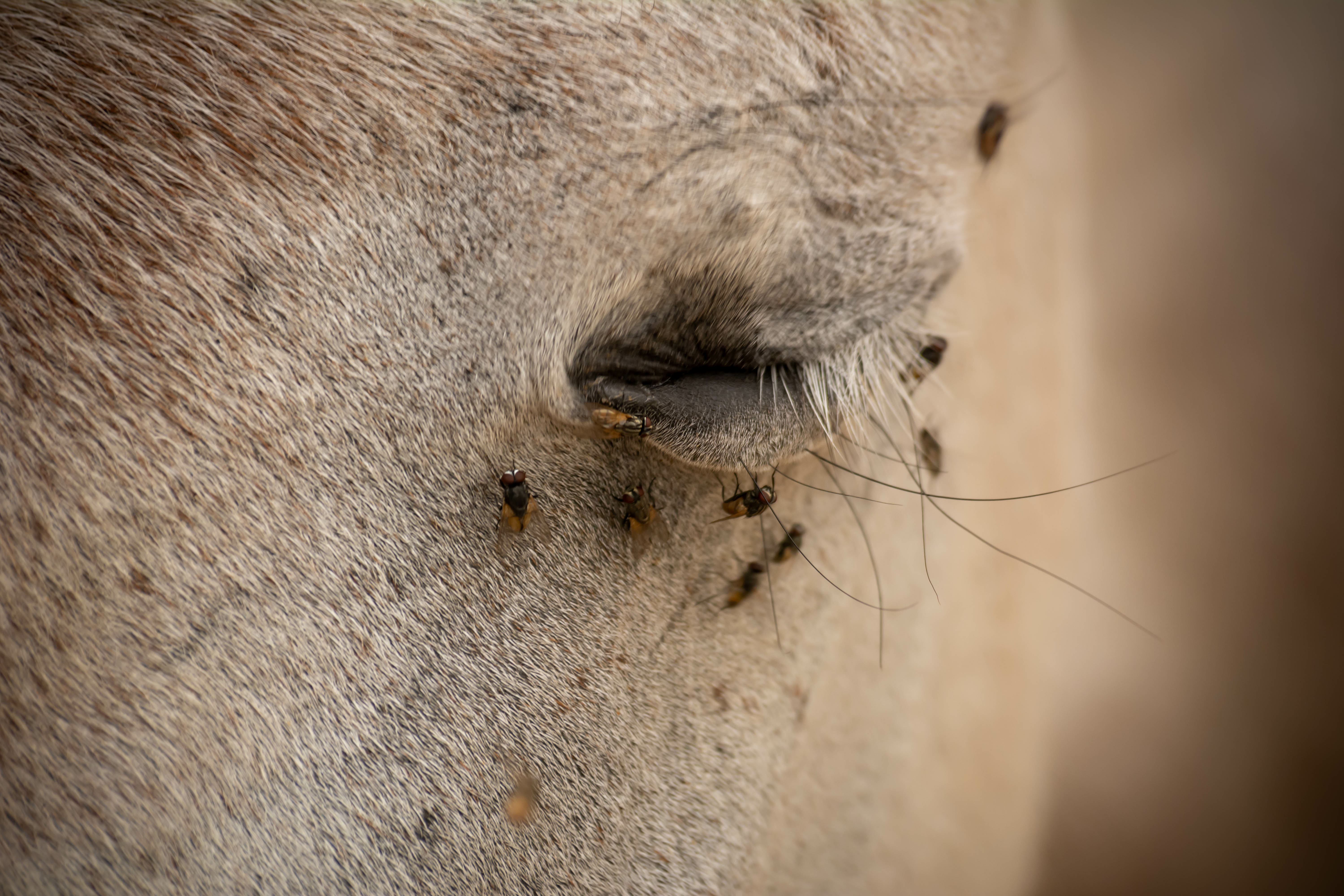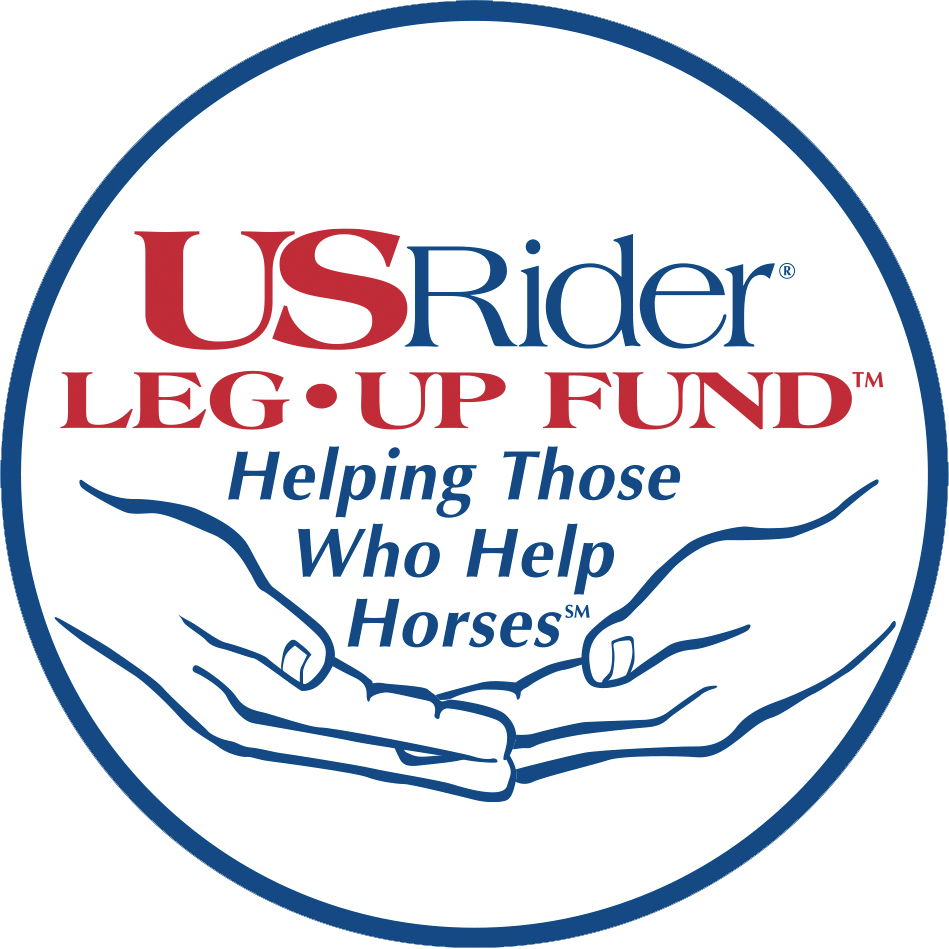Flies and mosquitoes don’t do well in turbulent air, so during bothersome times of day, a horse can be brought into a loafing shed or stall with a fan aimed appropriately to deter insect...

As much as a horse loves to have his face scratched to get at the itchy spots that can’t be reached, he hates to be bothered by the tickle of insects buzzing about his head and crawling on his face. Luckily, there are some practical and preventive remedies. In this article we’ll talk about some tactics that you can use to keep flies and mosquitoes at bay.
Commercial fly masks are wonderfully protective as the mosquito-net material serves as an excellent barrier against annoying insects. Some masks also come with ear netting to shield the ears; others include an extension piece that covers a large part of the nose and muzzle.
Fly sheets keep insects from landing directly on a horse’s body. The mesh material allows air to circulate over the skin, yet it blocks out bugs and some ultraviolet rays. Mesh leg boots cover from that animal’s hooves to the knees or hocks; these are especially useful for horses that are extremely sensitive to fly irritation on their legs.
Flies and mosquitoes don’t do well in turbulent air, so during bothersome times of day, a horse can be brought into a loafing shed or stall with a fan aimed appropriately to deter insect entry. Screened stalls are also useful if insect harassment is extreme. Use only fluorescent lights around the horses as they are least likely to attract insects. Turn off all stable lights at night. Incandescent lights placed away from the horse stabling areas lure mosquitoes away from horses.
Non-stinging fly predator wasps, also called parasitoids, can be ordered before fly season begins and continued monthly through to a killing frost. The wasps eat fly larvae in manure to reduce the number of flies hatching to adult form. Spreading them on manure around the property achieves the best effect for fly population control. The wasps help control of houseflies and stable flies, but not horse, deer or face flies. In some cases, weekly application might be necessary in wetter seasons.
Nematodes are another biologic insect control that can be ordered and spread on the property. Thriving in moist soil, bedding or manure, these worms destroy insect larvae by releasing bacteria that is non-toxic to mammals, birds or earthworms.
Of utmost importance to fly and mosquito control is environmental management with the objective of eliminating as many breeding sites as possible. Manure should be picked up frequently—at least daily—from stalls and runs, to be composted or removed from the property. Ensuring good drainage around the barnyard and in the barn helps to remove moist areas where insects proliferate. Mow vegetation and weeds around buildings and paddocks to minimize the habitat for insect breeding.
Any vessel that can hold water should be regularly drained or eliminated since mosquitoes are able to breed in the shallowest of water sources, especially if the water is rich in organic debris. Even a hoofprint in the mud around an overfilled water trough makes a possible habitat in which mosquito larvae can develop. It takes 4-14 days for larvae to hatch. Therefore, you should clean water tanks at least weekly to freshen water and remove stray hay and debris. Anything that holds even the scantest amount of water is a potential insect breeding site and should be removed where possible: buckets, pet food bowls, discarded cans or lids, wading pools, swimming pool covers, tarps, birdbaths, flower planters and pots, wheelbarrows, tractor buckets, gutters, trash cans, recreational boats and old tires.
Mosquito dunks help manage larger bodies of standing water such as water troughs, ponds and slues. Soil bacteria called Bacillus thuringiensis sub. israelensis (BTI) or Bacillus sphaericus (BS) control mosquito larvae effectively when applied weekly until a killing frost. Populating ponds with certain fish species that like to eat mosquito larvae can help reduce mosquito populations. West of the Mississippi River many horse properties use fathead minnows or plains killifish, whereas Gambusia species are used in Eastern states.
If you are a duck lover, you might consider using Muscovy ducks as a mosquito control measure. In just half an hour, one experiment saw ducks eat 90% of the flies in an area. They also wreak havoc on populations of grasshoppers, locusts and other insects.
Attempts at insect control include insecticide repellents applied over a horse’s body or in stabling areas. Insects might continue to bother a horse because of their attraction to movement, body warmth or carbon dioxide exhalations. But, repellents help keep down the attacks by noxious biting flies and mosquitoes. Insects are repelled by these products, but not necessarily killed.
Insect repellents applied around the face help keep flies away from the eyes and thin skin of the face. Avoid using sprays on the head as chemicals could accidentally get into a horse’s eyes and cause chemical burns. Roll-on insect repellents are safer to use as long as they don’t come in contact with the eyes. Spot-on insecticides with permethrin applied to the poll, tail, and behind each hock and knee seem to protect for a couple of weeks.
Daily feed-through insecticides pass through the horse’s GI tract and out with the feces to kill developing fly maggots on the ground. They only work in the manure and not in other insect breeding areas. In addition, if feed-through insecticides are used, the kill-off of larvae leaves the parasitoid wasps with little to feed on. Consult with your veterinarian about the safety and prudence of using feed-through products.
Fly traps—strips and containers with bait—are useful to kill houseflies, but they won’t necessarily attract biting stable flies. Ultraviolet bug zappers are fairly effective at killing mosquitoes and some fly species (stable and houseflies), but be careful not to place them close to combustible materials like hay or straw. They also can attract a higher population of unwanted insects to the area around the zapper, and not all bugs are killed by the machine.
Misting or fog sprayers in the barn using pyrethrin chemicals help to drop the number of biting stable flies and mosquitoes pretty quickly. It is also possible to apply residual insecticides to barn walls, ceilings and rafters. Try to use different chemicals throughout the insect season to minimize development of resistance by house flies, horn flies and stable flies. Close up holes in screens and check for areas where mosquitoes can enter the barn and overwinter.
During insect season, spray around the property once or twice a week with permethrin using a thermal fogger, boom or hand-held sprayer, being careful to stay away from aquatic habitats and bee areas.
There is not a sole insect control strategy that cures all the pest problems on a horse property. It will take a compilation of strategies to keep your horses bothered as little as possible during insect season. Environmental management is essential to reduce insect population numbers.


"*" indicates required fields